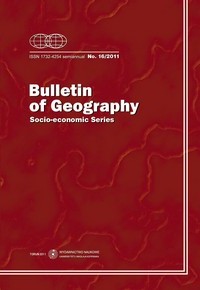Social and spatial dimensions of demographic processes in Beijing municipality at the turn of the 21st century
Social and spatial dimensions of demographic processes in Beijing municipality at the turn of the 21st century
Author(s): Anna Fedirko, Paweł Kretowicz, Tomasz ChaberkoSubject(s): Social Sciences
Published by: Wydawnictwo Naukowe Uniwersytetu Mikołaja Kopernika
Keywords: China; Beijing Municipality; demographic processes; one-child policy; floating population
Summary/Abstract: This study focuses on the demographic processes in Beijing Municipality at the turn of the 21st century and attempts to evaluate a role of China's social policies upon contemporary population changes. Two main determinants influencing present demographic characteristics were taken into consideration: the immigration of temporary workers and one-child policy. Socio-economic processes in Beijing are accompanied by the rapid changes of urban physiognomy as a result of immense city development (new industrial and residential areas) and new investments prepared for the 2008 Olympics. A spatial typology of socio-demographic changes between 1997 and 2007 was created in order to distinguish areas of different demographic and social development. Concluding remarks of this study highlight main characteristics and determinants of Beijing Municipality demographic features and a pace of their changes. Evidences typically found in Beijing clearly show a crucial role of market economy elements which have a great effect upon socio-spatial urban expansion
Journal: Bulletin of Geography. Socio-economic Series
- Issue Year: 2011
- Issue No: 16
- Page Range: 5-19
- Page Count: 16
- Language: English

